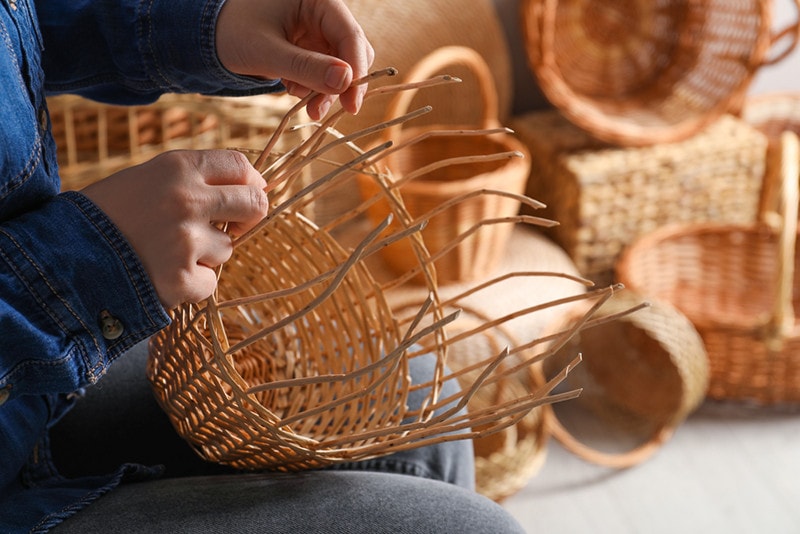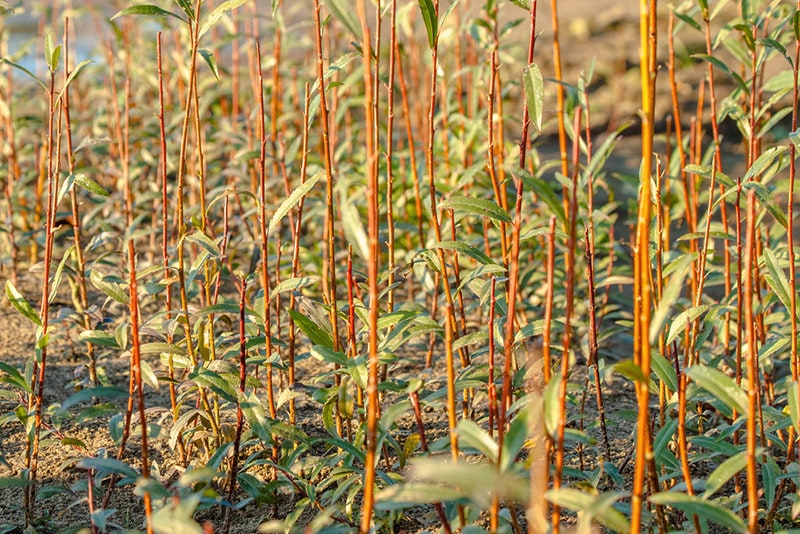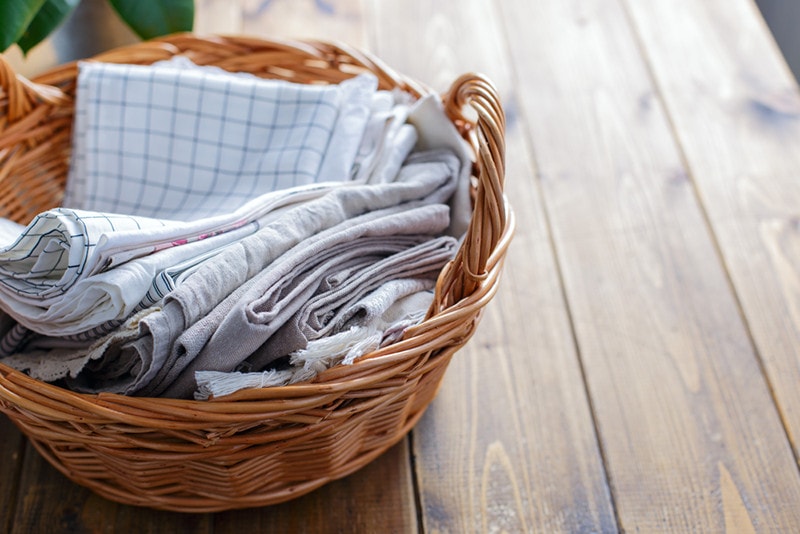Is Willow Used in Basket Weaving? How Do You Use It?
-
Kristin Hitchcock
- Last updated:

Willow is a very popular basket-weaving material. In fact, the large majority of larger baskets are made with willow. This is for a few different reasons. Firstly, willow is very flexible and can be bent into new shapes easily. Secondly, the branches are quite long, so new strands don’t have to be added quite as much (which can make weaving the basket take longer). Finally, willow is also quite plentiful in many areas. It isn’t rare by any means.
With that said, there are many different types of willow. They aren’t all the same, with some types being used more for basketry than others. If you’re looking to weave with willow, be sure you consider the exact species of willow, too. Not just any willow tree will do, in most cases.
What Materials are Used to Weave Baskets?
Traditionally, many materials were used to weave baskets. Often, cultures used the materials they had on hand that were most suitable to the job. Sometimes, special methods were developed to make a material easier to work with. In the end, this led to very specialized basket weaving methods in some cultures. This is also why baskets look so different.
Willow is a fairly popular material, as we have discussed. However, it isn’t used everywhere, as willow isn’t native to everywhere. Even today, different materials may be used.
Cedar bark, cedar root, cattail leaves, and spruce root are all extremely common. Many modern baskets you purchase in a store may be made from a very processed material. Usually, these baskets aren’t made in traditional ways. Smaller baskets can be made from pine tree needles. These small baskets are traditional in some areas where larger materials aren’t available.
Honeysuckle, vines, bamboo, reeds, and different kinds of grasses can often be used for weaving. However, these materials aren’t always the best option. Therefore, if a better option exists locally, it is often chosen by the weaver.

What is a Basket Willow?
The basket willow is a particular kind of willow tree that is native to Europe, Western Asia, and the Himalayas. Like most willow trees, it is usually found in wetter places and along bodies of water. It can grow rather high, reaching 33 feet in some cases.
As the name suggests, this is a rather popular plant to weave baskets out of. However, this isn’t the only species that is used for basket weaving. Instead, it is simply one of the most popular. Today, this tree is often grown on farms for basket weaving purposes. The branches can be bent completely without breaking while they are still fresh. In the end, this means that you can easily use them to weave baskets.
This trait is one reason why these plants were so popular among basket weavers today and in ancient times.
How Do You Grow Willow for Basket Weaving?

You can grow your own willow trees for basket weaving. However, you should remember that willow takes a very long time to grow. Therefore, this isn’t something that you can harvest in a few months like most plants. The most popular willow trees utilized for basket weaving don’t even produce branches in their first year.
You’ll need to select the willow variety you want to use for basket weaving. Many avid basket weavers choose multiple varieties to plant. These varieties may require different soil and sun conditions, however.
You’ll also need to consider your climate. Even if you love to use a particular branch for basket weaving, it doesn’t mean that you can necessarily grow that tree. Willow trees may be sensitive to the amount of water in the soil, the sun’s amount, temperature, and soil composition. You need to choose one that can grow in your area.
Luckily, most people can find a willow that they like to use and that grows in their area.
Can You Weave with Fresh Willow?
You can often weave with fresh willow. However, you should keep in mind that willow tends to shrink as it dries. Therefore, if you weave it before it dries, you may have gaps in your weaving later. The willow branches will shift, which can make your basket work appear messier.
Therefore, it is recommended to let willow dry for about 6 weeks before you weave with it. Most types of willow will be mostly dry at this point while remaining flexible enough to use.
If you have to weave with fresh willow, it is possible. However, do keep in mind that it can become a bit messier later on. The basket won’t look the same after the branches shrink.

How Long Do Willow Baskets Last?
When kept indoors, willow baskets will last a very long time. These baskets do not decay or break down over time as long as they aren’t exposed to the elements. However, willow baskets that are kept outside typically only last about 5 years. After this time, they will be too decayed and weathered to be very structurally sound.
However, there is a variance from basket to basket. Some baskets that are made for outdoor use may last longer.
Final Thoughts
Willow trees are a popular material for basket weaving. These trees have very long, flexible branches. Therefore, they’re easily bent into the shape of the basket and maintain this shape without much issue. However, different types of willow are preferred over others. Not all types of willow are the same, with some major differences between different species.
Furthermore, willow isn’t the only material used. Grasses, reeds, vines, and other trees are also utilized for basket weaving. In the modern world, processed wood is often used, as well. Therefore, what a particular basket is made out of can vary widely.
Featured Image Credit: New Africa, Shutterstock
Contents
